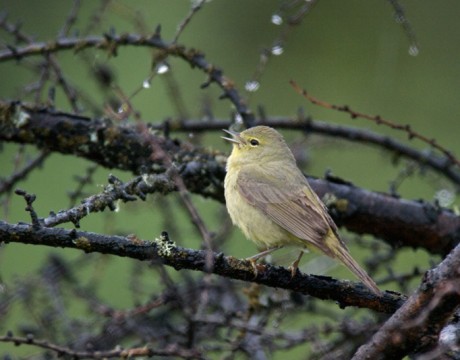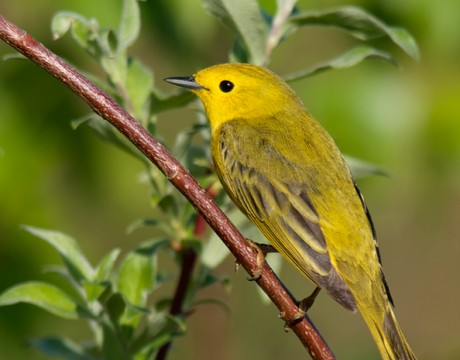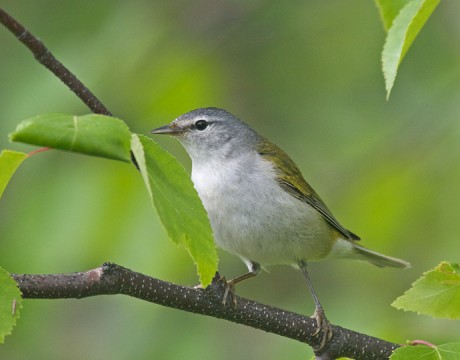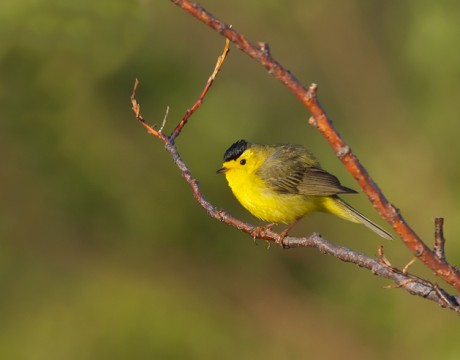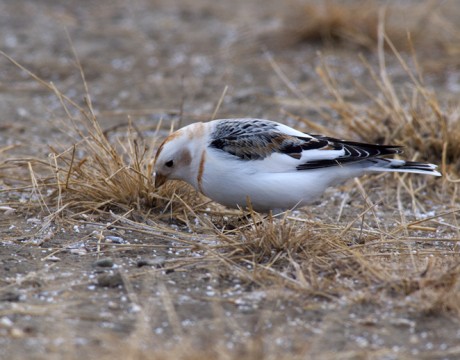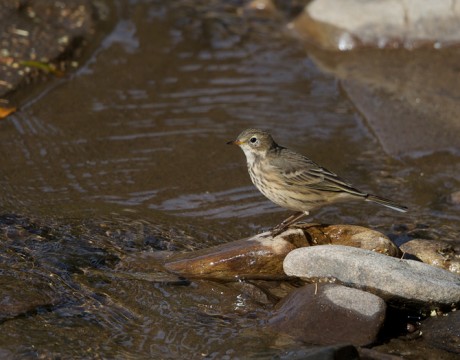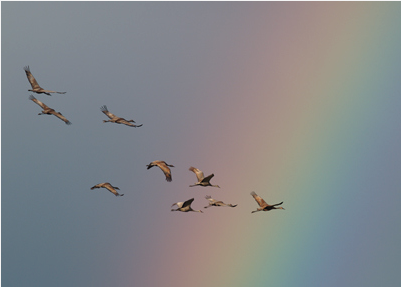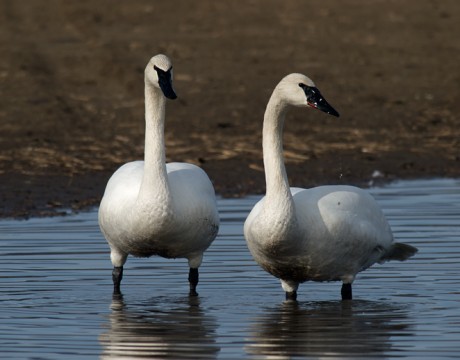Bird of the Week – Glaucous Gull
The Glaucous Gull is Alaska’s largest pale gull. In shape and size, the Glaucous Gull is similar to the more familiar Herring Gull and Glaucous-winged Gull. But the Glaucous Gull has no black in its feathers, is quite pale and has a clear yellow iris. There are other very pale gulls in Alaska, but you won’t usually see them unless you are in Barrow in October. WC has no idea what this north coastal bird was doing at Galbraith Camp, along the Dalton Highway, 200 miles inland. Camera geek stuff: f11, 1/3200, ISO2500. For more bird photos, please visit Frozen Feather…
Bird of the Week – Orange-crowned Warbler
The Orange-crowned Warbler isn’t the flashiest bird in the boreal forest. The signature “orange crown” isn’t usually even visible, unless the male is defending territory. Look for the yellow undertail feathers and the short, dark eye line in an otherwise fairly drab bird. Camera geek stuff: f8, 1/200, ISO800 For more bird photos, please visit Frozen Feather Images.
Bird of the Week – Yellow Warbler
Widespread in Alaska – WC has seen them as far north as the Canning River on the north side of the Brooks Range – and conspicuous, the Yellow Warbler is one of the easier birds to identify among summer migrants. In breeding season, the male has strong, longitudinal orange streaking on his breast; the female’s are fainter. Of all of Alaska’s warblers, the Yellow Warbler is most often out in the open and most easily seen. WC has heard them called “Wild Canaries.” Other than being yellow birds, they have no relationship to true canaries. Camera geek stuff: f6.3, 1/320,…
Bird of the Week – Tennessee Warbler
Tennessee Warblers appear to be expanding their range into Interior Alaska. There are isolated places where they are found during Breeding Bird Surveys. For example, for the last seven years there’s been a Tennessee Warbler found on the Richardson Highway where the road drops down into Black Rapids Canyon. But they aren’t common. So it was a Birder Big Deal when this handsome fellow turned up outside of Fairbanks in 2008. Camera geek stuff: f5.7, 1/250, ISO 800 For more bird photos, please visit Frozen Feather Images.
Bird of the Week – Wilson’s Warbler
The small, handsome Wilson’s Warbler tends to stay in dense, brushy vegetation, often near water. But the male sometimes comes out into the open to sing, staking out his territory. The black cap identifies the adult male; the female is less commonly seen, but has the same yellow face and chest. It’s always a treat to see them. Camera geek stuff: f11, 1/250th, ISO 500. For more bird photos, please visit Frozen Feather Images.
Bird of the Week – Snow Bunting
The all-time champion far north-breeding songbird is the Snow Bunting. The Snow Bunting is the first migratory songbird to arrive in Interior Alaska in the spring, en route to mountaintops and the far northern edge of Alaska. They are a common sight in Barrow, Alaska; much less common any further south. This may be the song bird that breeds furthest north; they are found on the northerly shores of Greenland and the northern edge of the Canadian arctic archipelago. They are welcome sight in Fairbanks each year: they are the earliest sign winter might, just possibly, be ending. For more bird…
Bird of the Week – Horned Lark
The Horned Lark, like last week’s American Pipit, is a bird that migrates to Alaska and northern Canada to breed in the high alpine tundra, above tree line. This is North America’s only native lark. If anything, Horned Larks breed at even higher, sketchier altitudes than American Pipits. This bird was near the top of Whistle Ridge, at an elevation of about 5,000 feet. They succeed and prosper there, raising their young among the rocks, lichen and intermittent Dryas mat. Horned Larks don’t migrate quite as far south as American Pipits, although their winter ranges overlap. By the way, Horned Larks’ courtship…
Bird of the Week – American Pipit
American Pipits breed on the alpine tundra, well above tree line. Unless you visit the Denali Highway, or Eagle Summit on the Steese Highway, or otherwise get to those higher elevations, you’ll only see these birds in Spring and Fall migration. This bird is already in winter plumage, losing the buffy-orange chest of breeding plumage in favor the less-conspicuous heavy streaking you see here. Soon enough, this bird will leave for southern Arizona and New Mexico for the winter. Camera geek stuff: Canon 5D Mark II, 500mm lens with 1.4 teleconverter; f5.6, 1/1250, ISO 200. For more bird photos, please…
Bird of the Week – Sandhill Cranes
The Sandhill Crane Festival was last month here in Fairbanks. WC thought he’d break out of the usual Bird of the Week format and help folks get ready for autumn with an essay he wrote for another forum a few years ago. THE MAGIC OF SANDHILL CRANES Each fall, several thousand Lesser Sandhill Cranes stage at Creamer’s Field Migratory Wildlife Refuge as a part of their fall migration. The Refuge, a former dairy, is managed by the Alaska Department of Fish & Game as a working farm and hosts large numbers of waterfowl in both the spring and fall. But it’s in the fall…
Bird of the Week – Trumpeter Swan
Alaska’s biggest bird by weight, the Trumpeter Swan: At 23 pounds, with a wing span of nearly seven feet, this is one Big Bird. Their distinctive bugling call is one of WC’s favorite sounds of Spring. The species was nearly extirpated in the Eastern half of the U.S. by the feather trade, but has made a steady recovery. While there are certainly still Alaska waterfowl WC could post, it’s time for a break from the pond and lake crowd. We’ll change bird families next week. For more bird photos, please visit Frozen Feather Images.






